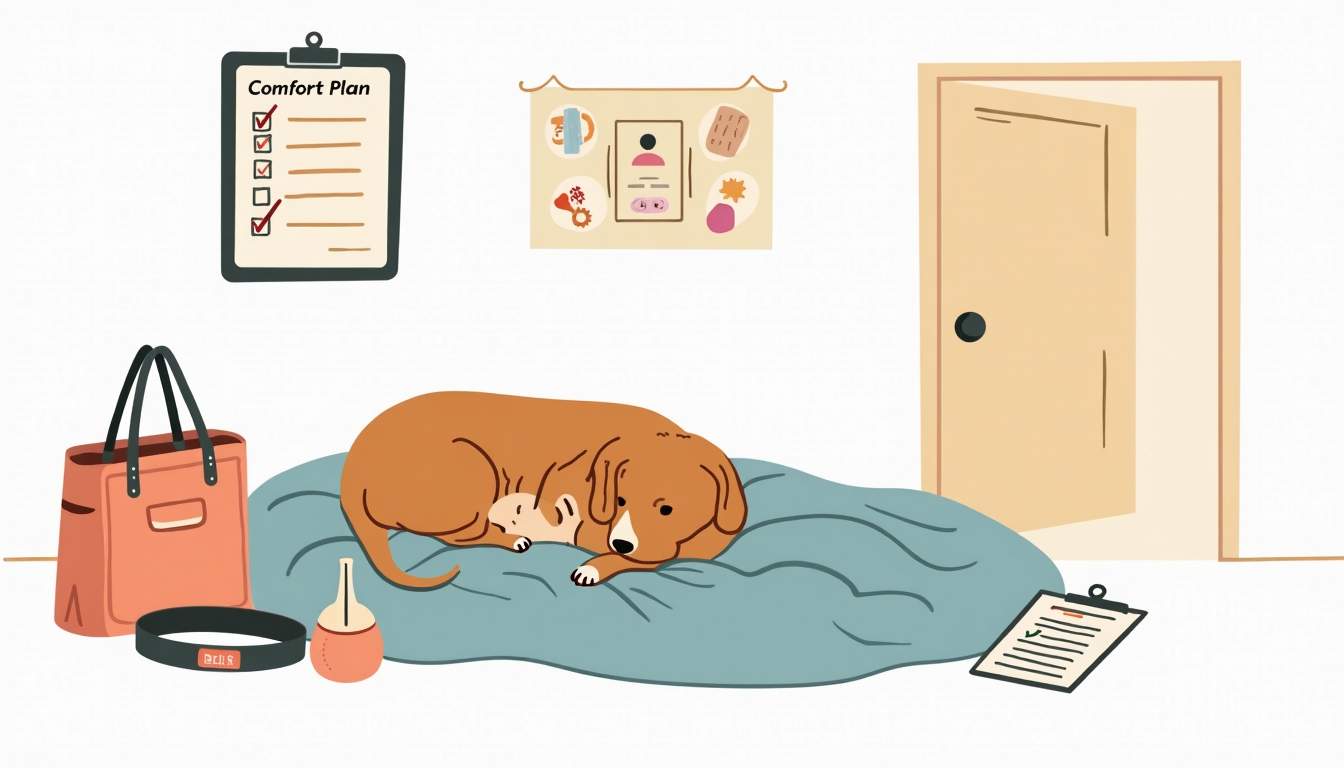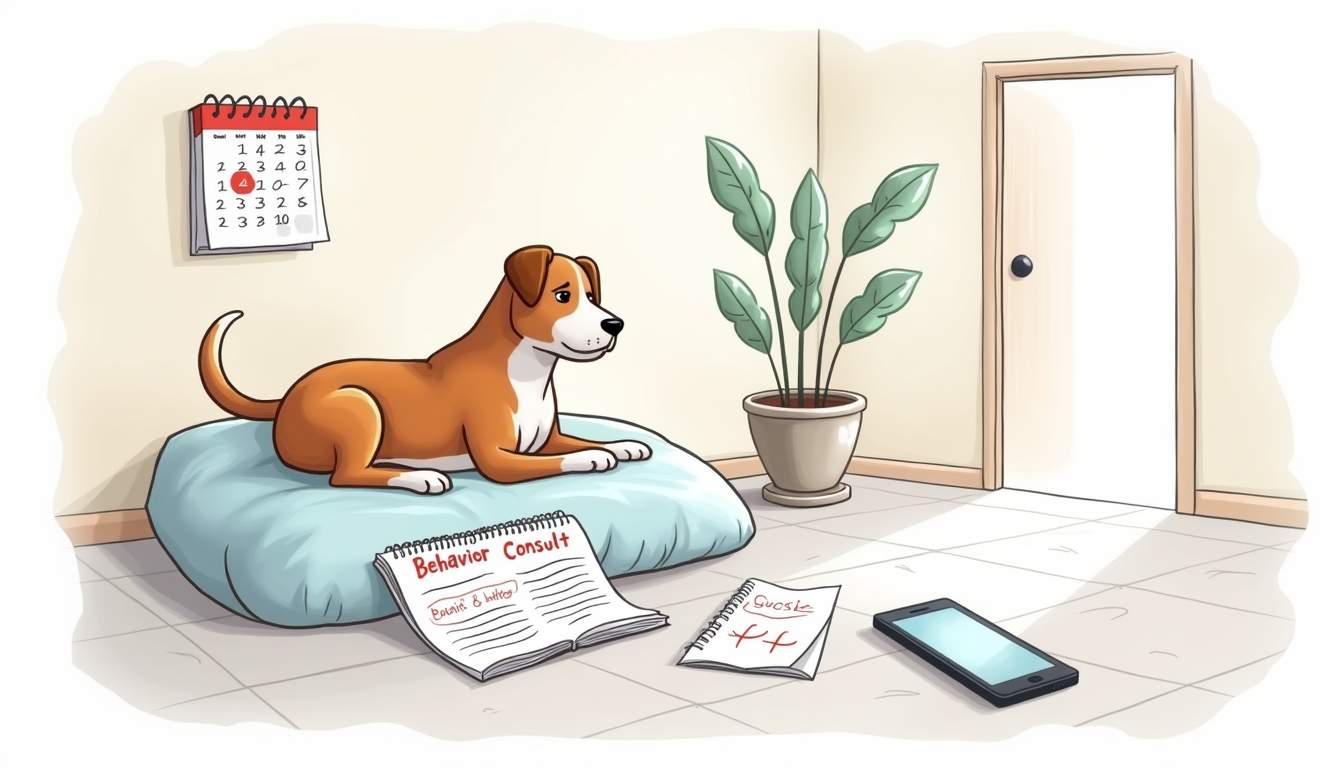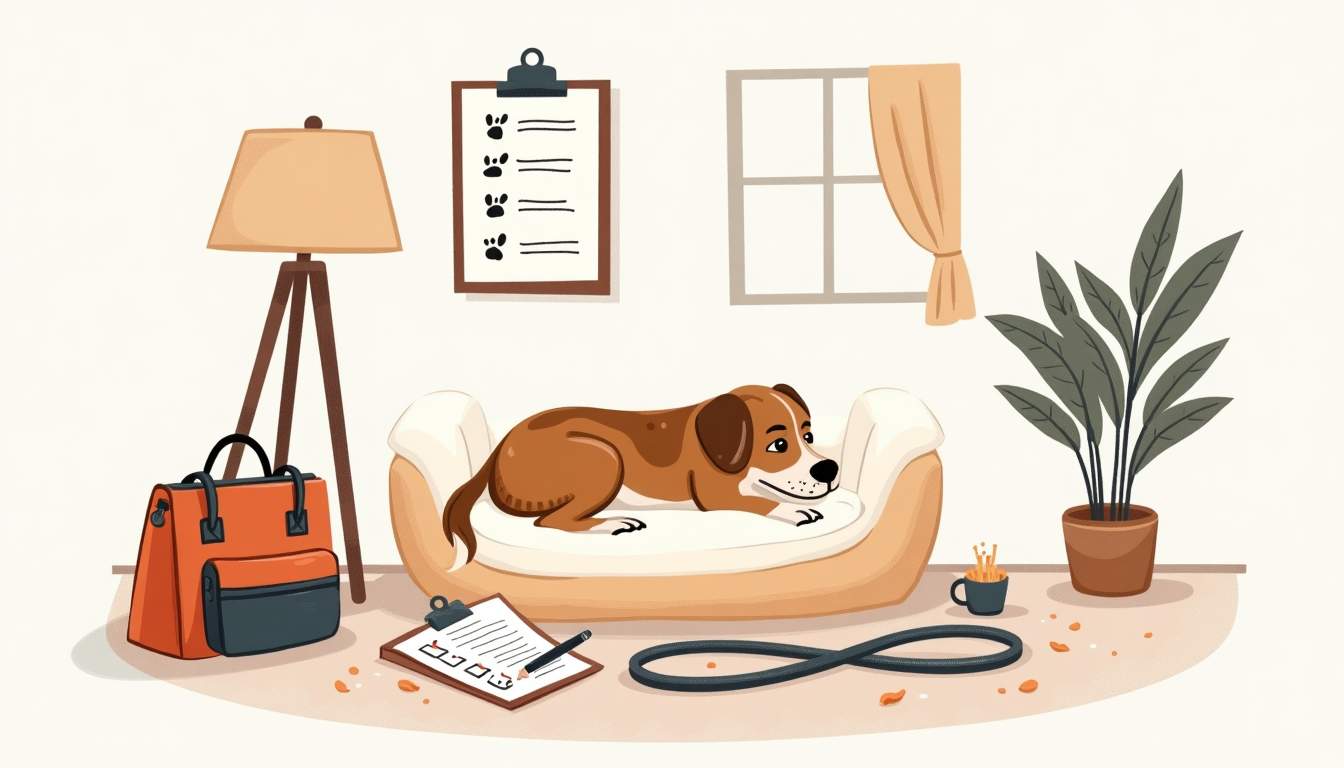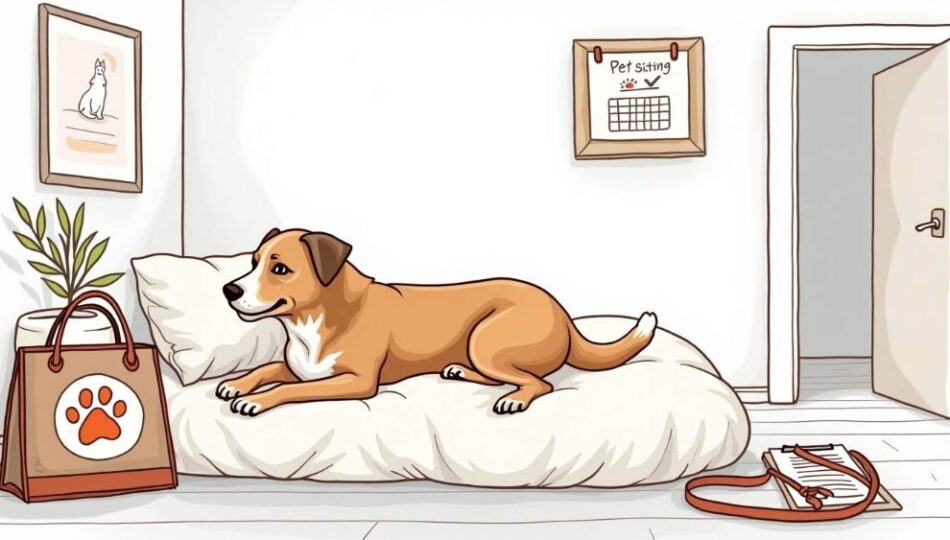Switching from a family member or neighbor caring for a dog to a professional pet sitter can feel like a big step. With patience, planning, and clear communication, the transition can be smooth and stress-free for both dog and owner. This guide outlines practical steps and best practices to help introduce a dog to professional pet sitting services with confidence.
Another advantage is the reduced exposure to contagious illnesses and stressful interactions that can occur at group facilities; a pet sitter limits a dog’s contact to known household members and controlled outings. This is particularly important for puppies with incomplete vaccinations, senior dogs with weakened immune systems, or pets recovering from surgery. In-home care also preserves dietary routines and feeding schedules, minimizing gastrointestinal upset that can result from abrupt changes in food or feeding times.
Professional sitters also contribute to household security and continuity while owners are away: they can bring in mail, rotate lights, and observe any signs of disturbance, providing peace of mind beyond pet care alone. Many sitters maintain clear communication protocols pre-visit notes, daily updates, and emergency contacts and coordinate with veterinarians when needed, ensuring that both routine and unexpected situations are handled promptly and responsibly.
Schedule a meet-and-greet or trial visit before committing. Observing how the sitter interacts with your dog in your home whether they follow your routines, respect boundaries, and respond to commands reveals a lot. Use this time to test logistics like key exchange, gate or door codes, and where the sitter will rest or store supplies. A successful trial visit can uncover small but important details, such as how the sitter manages leash manners, treats separation anxiety, or implements feeding schedules.
Discuss health and safety specifics up front: walk protocols, handling of medications, vaccination verification, and steps for medical emergencies. Ask whether the sitter uses GPS-tracked walks, sends photo or video updates, and how frequently they’ll report in. These operational details not only protect your pet but also set expectations for communication and help you feel more confident leaving your dog in capable hands.
Prepare a small information packet the sitter can refer to: your veterinarian’s contact and preferred emergency clinic, a list of current medications and dosages with administration times, known allergies, and any behavioral triggers or medical conditions. Include detailed feeding instructions (brand, portion sizes, and timing), normal bathroom routines and cues, favorite toys and calming aids (e.g., a Thundershirt or pheromone diffuser), and clear directions to where leashes, harnesses, treats, waste bags, and keys are stored. A photo of the dog and a recent description of identifying marks can also be helpful in case of an emergency. For more details, visit Four Dog Paws.
Spend time acclimating the dog to items and places the sitter will use: let the dog sniff the sitter’s shoes or jacket ahead of time, place the sitter’s bedding or a worn t-shirt in the dog’s sleeping area so the new scent becomes familiar, and walk the routes you expect the sitter to take together. Practice simple handoffs—giving the leash to the sitter, letting them offer treats and small training cues—so the dog learns to transfer trust. These small preparations make the first visit smoother and help the sitter step confidently into your dog’s established routine.
Provide the sitter with clear emergency and health information: the veterinarian’s contact details, preferred emergency clinic, any medications (with dosing schedule and administration tips), and signs of distress specific to your dog. If your dog has allergies, sensory sensitivities, or a fear of certain noises or surfaces, point these out so the sitter can proactively avoid triggers. A short written sheet pinned to the fridge or a laminated card in your dog’s bag makes this information easy to find in a stressful situation.
Discuss communication preferences and enrichment plans: whether you’d like text updates, photos, or a brief visit log noting meals, walks, potty breaks, and moods. Share favorite walk routes and any leash-reactivity spots to avoid, and suggest enrichment activities the sitter can use to keep the dog occupied—puzzle feeders, short scent games, or supervised chew time. Clear house rules about furniture, doors that must stay closed, and visitor policies will help the sitter maintain consistency and ensure your dog’s day stays calm and predictable.
Also include practical, day-to-day specifics that make care seamless: a sample daily schedule with exact times for walks, meals, play, and naps; labeled medication containers with dosages and administration times; location of spare leashes, harnesses, waste bags, and cleaning supplies; where to find fresh towels, a crate or bed, and the dog’s favorite toys or comfort items. Note any training cues or commands the dog reliably responds to, preferred walking routes and rough walk durations, tolerance for other dogs or children, signs of stress or pain to watch for, and any dietary sensitivities or foods to avoid. If the sitter will need access to the house remotely, include clear instructions on smart locks or alarm disarming and re-arming, plus a backup key location and a trusted neighbor or emergency contact who has a spare key.
Finally, cover administrative and practical contingencies: payment method and schedule, cancellation notice expectations, and whether the sitter is authorized to transport the dog to a clinic or groomer if needed. Provide copies or reference numbers for pet insurance, microchip information, and vaccination records, and specify how to handle boarding if the sitter becomes unavailable. Including recent photos of the dog and a brief “what to expect” snapshot (favorite calming techniques, which vet treatments worked historically, and how the dog behaves in a car) further reduces stress for both sitter and owner and helps ensure consistent, confident care.
Handling Separation Anxiety and Stress
Recognize Signs of Stress
Signs include pacing, drooling, destructive behavior, excessive barking, or house-soiling. If any of these behaviors appear during trial visits, note when they occur and discuss management strategies with the sitter.

Use Calming Tools and Techniques
Calming aids such as pheromone diffusers, anxiolytic wraps, enrichment toys, and background music can help. Scheduled, focused exercise before departure often reduces excess energy and lowers anxiety levels.
Collaborate on a Behavior Plan
Work with the sitter to implement a consistent behavior plan, which might include gradual desensitization to departures, counter-conditioning, or engaging in enrichment activities during absences. If anxiety is severe, consult a veterinarian or a certified behaviorist for additional strategies.
Medication and Special Care
Clear Instructions for Medications
Provide labeled medication with dosing instructions, administration tools, and a written schedule. Demonstrate the process during the meet-and-greet so the sitter is comfortable administering pills, liquids, or injections if necessary.
Care for Senior or Special-Needs Dogs
Sitters experienced with mobility issues, incontinence, or chronic conditions should be prioritized. Outline any assistive devices, preferred handling techniques, and physical therapy routines to keep the dog comfortable and healthy.
Safety, Home Access, and Security
Safe Access and Home Security
Discuss key access, alarm codes, or smart lock permissions ahead of time. Confirm photographs of the home’s exterior and yard to aid navigation. Safety measures, such as securing gates and checking fences, are essential during walks and play sessions.
Manage Interactions with Other Dogs and People
Provide a temperament profile that notes reactions to other dogs and strangers. If the dog is reactive, request leashes with safe length, a muzzle if recommended, or walks in quieter areas. Clear guidelines prevent misunderstandings during group interactions.
Monitoring and Feedback
Daily Reports and Documentation
Regular updates create a record of feeding times, walks, elimination, behavior, and any unusual observations. These reports help detect health or behavioral changes early and provide reassurance to the owner.
Adjusting the Plan Based on Observations
After the first few visits, review what worked and what did not. Adjust timings, enrichment, or handling methods as needed. Flexibility and open feedback ensure the routine becomes tailored and effective.
Building Long-Term Trust
Consistency and Reliability
Consistent scheduling, punctuality, and predictable behavior from the sitter help the dog build trust. Dogs respond to routine and reliable cues more readily than to sporadic attention.
Positive Reinforcement and Comfort
Encourage the sitter to use positive reinforcement treats, praise, and play to reinforce calm behavior. Comfortable bedding and access to favorite toys can create a sense of safety and ownership in the sitter’s presence.
Final Tips and Common Pitfalls
Start Early and Be Patient
Begin the transition well before extensive travel or long absences. Dogs often need multiple meetings and gradual departures to accept a new caregiver. Patience pays off in long-term stability.
Avoid Overloading the First Visits
Keep the initial sessions brief and stress-free. Avoid introducing multiple new things such as different routes, new toys, or unfamiliar people during early visits. Let the dog acclimate to one major change at a time.
Prepare for Changes and Reassess Regularly
Even after a smooth transition, behavior and needs can evolve. Regularly reassess the care plan, communicate changes in health or routine, and update emergency contacts. Ongoing collaboration preserves the dog’s well-being.
When to Seek Professional Behavior Help
If separation anxiety, aggression, or other concerning behaviors persist despite gradual introductions, consultation with a certified animal behaviorist or veterinarian is recommended. A professional evaluation can pinpoint underlying issues and suggest a targeted behavior modification plan or medical interventions.

Behavioral professionals can also work alongside sitters to implement consistent techniques across visits, accelerating progress and ensuring safety. Early intervention is usually more effective than waiting for problems to escalate.
Conclusion
Transitioning a dog to professional pet sitting services requires planning, clear communication, and gradual exposure. Choosing a sitter with the right experience, creating a detailed care plan, conducting meet-and-greets and trial visits, and addressing separation anxiety proactively all contribute to a successful changeover.

With thoughtful preparation and consistent follow-through, a dog can thrive under the care of a professional sitter while owners gain peace of mind knowing routines, safety, and emotional needs are being met.







